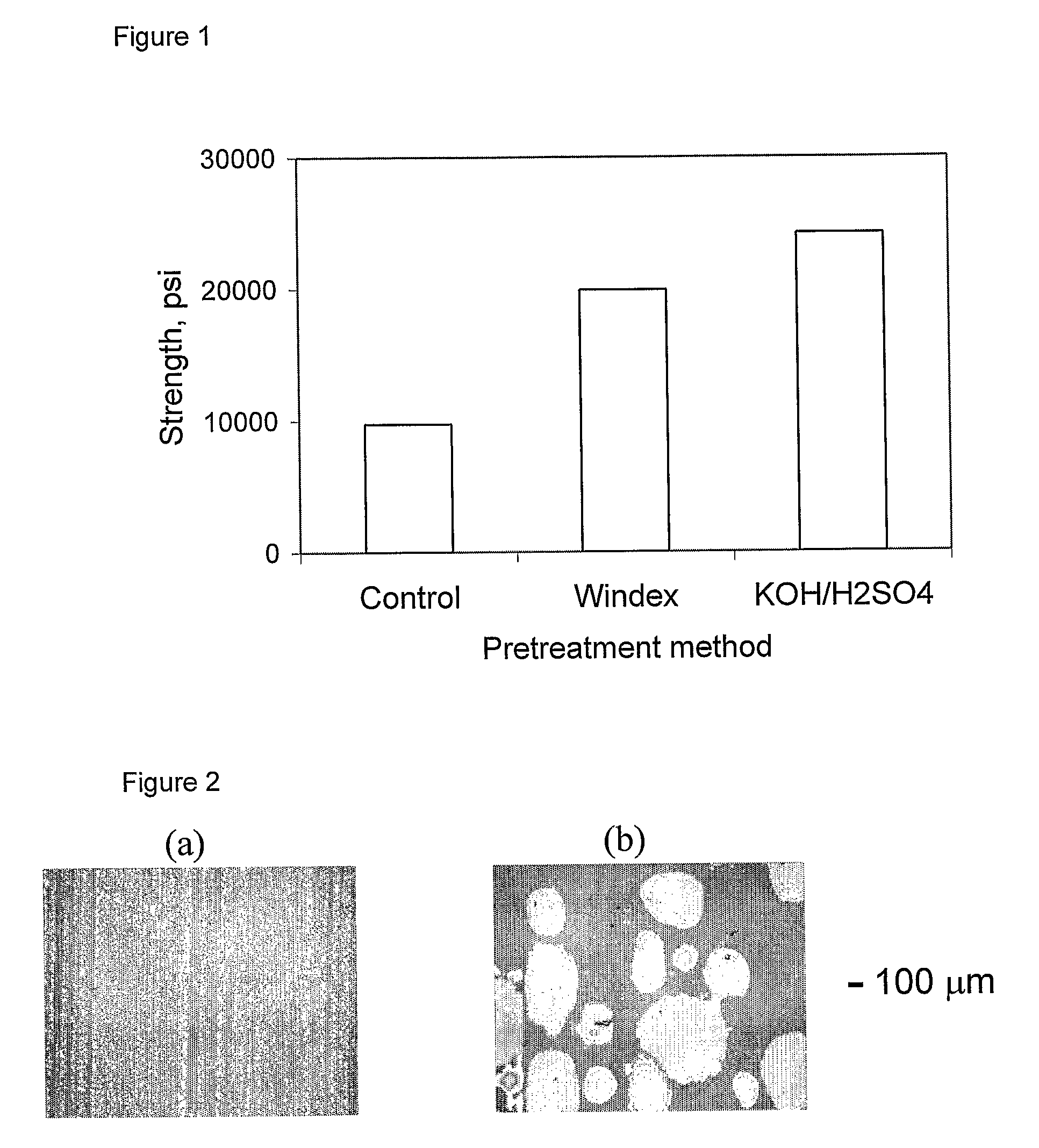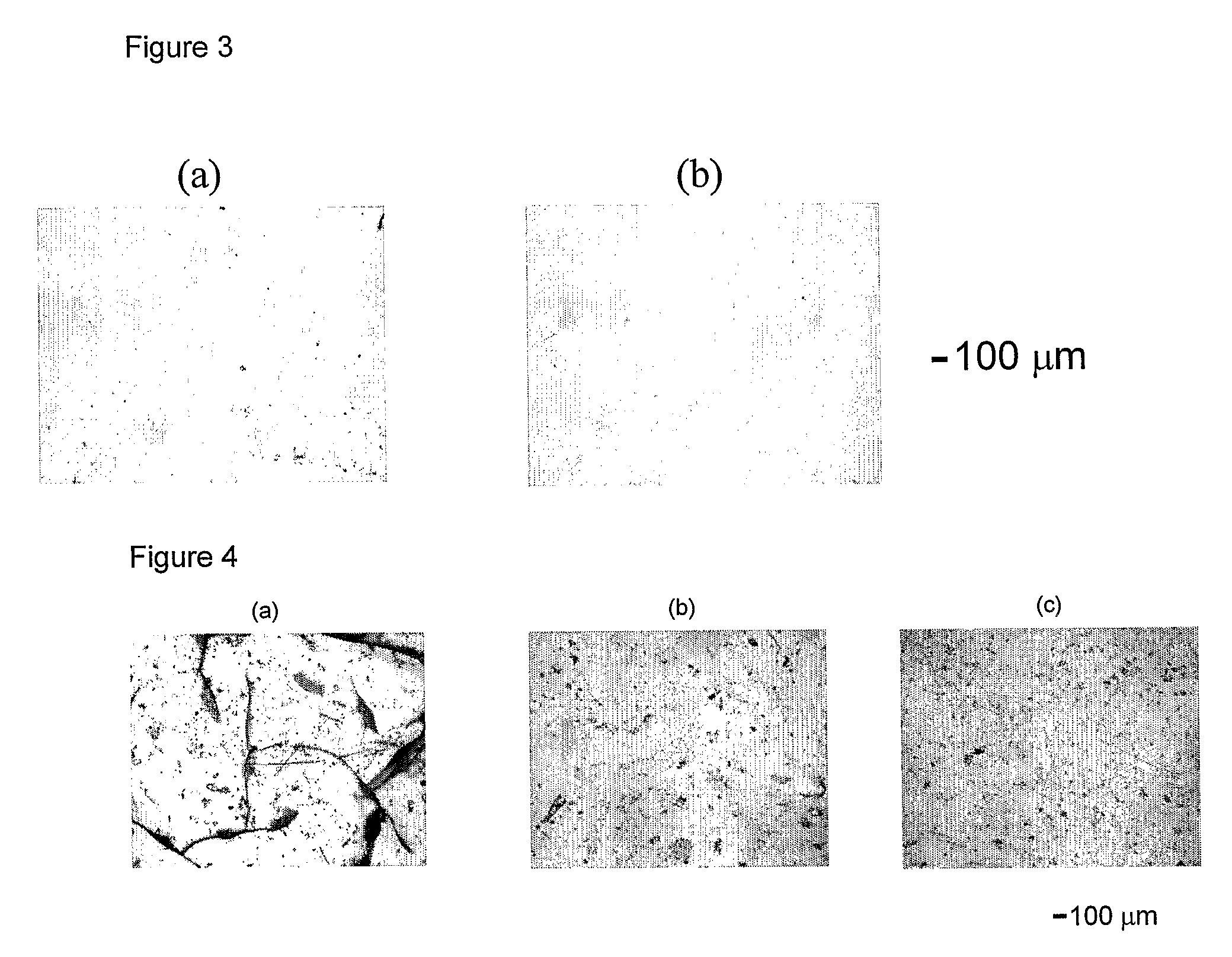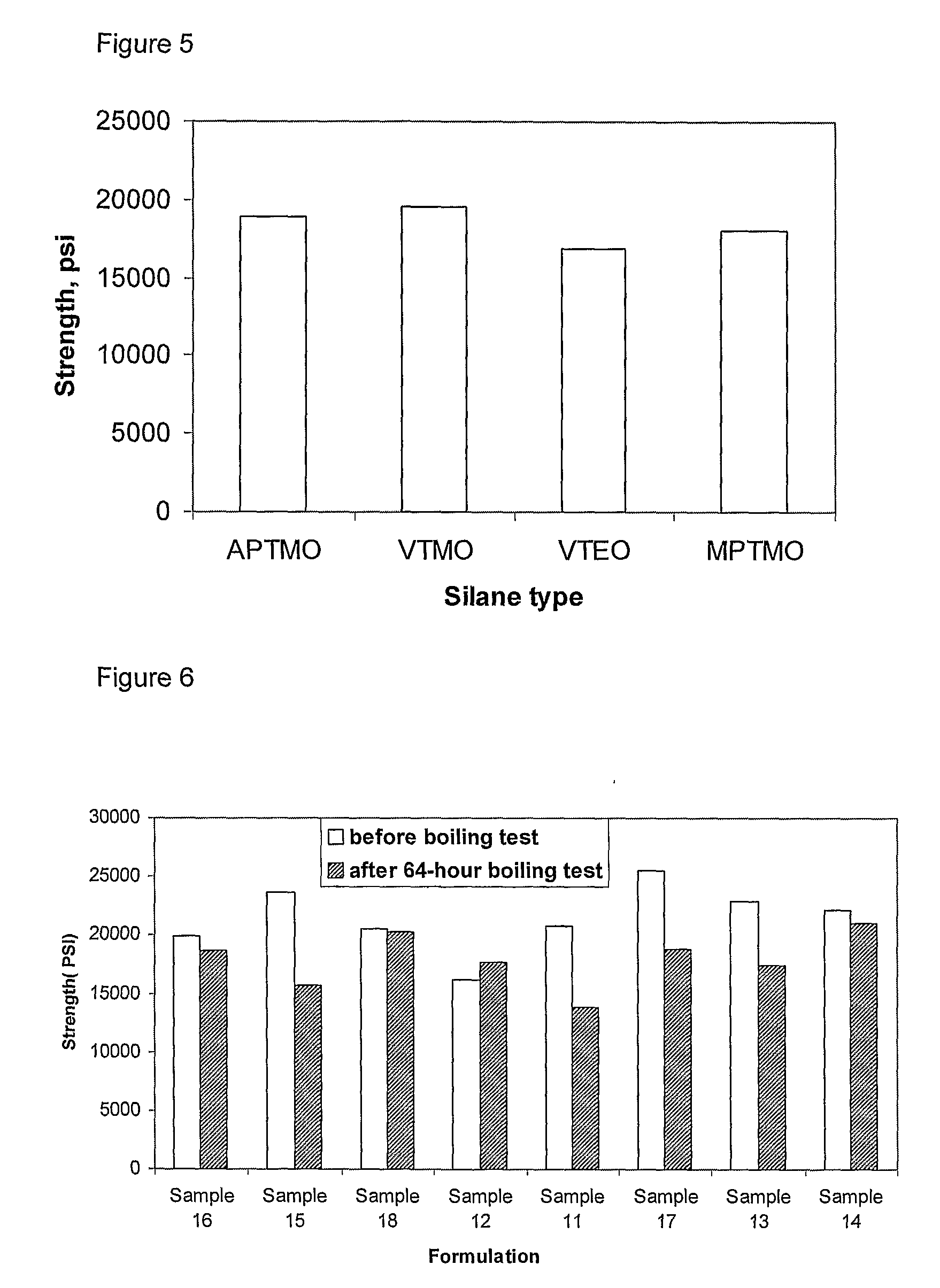Method of Strengthening a Brittle Oxide Substrate with a Weatherable Coating
- Summary
- Abstract
- Description
- Claims
- Application Information
AI Technical Summary
Benefits of technology
Problems solved by technology
Method used
Image
Examples
example 1
[0037]A coating combination comprising a combination of a silane component comprising the silane coupling agent, gama-methacryloxypropyltrimethoxysilane 3% and the polyalkoxyfunctional silane crosslinker bis(tri-ethoxysilyl)ethane 3% in isopropanol solvent 13% with an acrylate component comprising the acrylates: urethane acrylate oligomer plus 1,6-hexanediol diacrylate (Ebecryl 284, the ratio of urethane acrylate oligomer to 1,6-hexanediol diacrylate is 7.33:1) 30%, tris(2-hydroxylethyl)isocyaurate triacrylate 28% and isobornyl acrylate 17% with photoinitiators 2-hydroxy-2-methyl-1-phenyl-1-proponane 1% and ethyl(2,4,6-trimethylbenzoyl)phenylphosphinate 4% was prepared. The ratio of total silane solution to total acrylate solution on a weight basis was 1 to 4. Water 1% adjusted to pH=4 with aqueous acetic acid was added to the silane component to catalytically hydrolyze the silanes. Before mixing the silane solution with the acrylate solution, aging of the silane solution for 4 hour...
example 2
[0039]Non-indented, flat glass test panels cleaned with the “potassium hydroxide / acid” cleaning regime and coating in accordance with example 1 were subjected to boiling water testing to evaluate the hydrolytical stability of the coating. The coating thickness was 70 microns. Cleaned and coated glass panel were immersed in boiling water for 1 hour, examined, and then immersed for an additional 3 hours. Optical microscopy was used to examine for blister and other defect formation. X-cut tape test (ASTM D3359-02 method A) was also used to evaluate the wet adhesion. FIGS. 2 and 3 show photomicrographs of the glass panels after boiling water immersion. As can be seen, after one hour immersion (FIGS. 2a and 3a) the glass panel cleaned with a commercial glass cleaner began to show blistering and the adhesion rating dropped to 1 A. Whereas glass panels cleaned with the potassium hydroxide / acid process did not show any blister formation and the adhesion rating remained at 5 A. After the add...
example 3
[0040]Flat glass test panels cleaned with the “potassium hydroxide / acid” cleaning regime and coating in accordance with example 1 were subjected to QUV accelerated weathering testing comprising exposure to continuous deionized water spray at 60° C. (100% humidity) and UVA-351 exposure with 0.25 W / m2 / nm light intensity and strength was tested with the ring-on-ring test. The coating thickness was 70 microns (Sample 1) and 30 microns (Sample 2) respectively. Table 2 summarized the strength before QUV test. Included are Control 1 for indented non-coated glass panels and Control 2 for indented, non-coated, cleaned glass panels. The results are averages for 9 replicate tests. In the QUV high humidity testing, the coated test panels with Sample 1 began to show blistering at about 6 days and delamination at about 5-9 weeks, whereas the coated test panels with Sample 2 began to show blistering at about 4 days and delamination at about 4-7 weeks.
TABLE 2Strength TestingTest systemControl 1Cont...
PUM
| Property | Measurement | Unit |
|---|---|---|
| Percent by mass | aaaaa | aaaaa |
| Fraction | aaaaa | aaaaa |
| Fraction | aaaaa | aaaaa |
Abstract
Description
Claims
Application Information
 Login to View More
Login to View More - Generate Ideas
- Intellectual Property
- Life Sciences
- Materials
- Tech Scout
- Unparalleled Data Quality
- Higher Quality Content
- 60% Fewer Hallucinations
Browse by: Latest US Patents, China's latest patents, Technical Efficacy Thesaurus, Application Domain, Technology Topic, Popular Technical Reports.
© 2025 PatSnap. All rights reserved.Legal|Privacy policy|Modern Slavery Act Transparency Statement|Sitemap|About US| Contact US: help@patsnap.com



